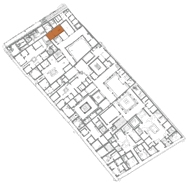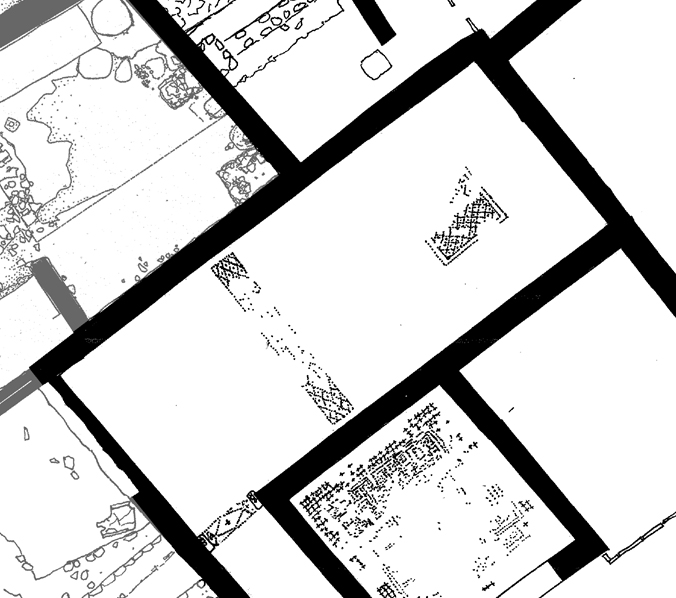Room m (triclinium)
Description
Thomas Staub
This room, which probably served as a triclinium is situated to the north of the peristyle but separated from it by the oecus finestratumn and is reached from there by means of the narrow corridor m'. Its secluded and shadily location has led to the interpretation of this room as the summer triclinium of the house (Strocka 1995). The walls are mostly constructed in a mixed opus incertum, partly also showing the use of spolia. In both the south and the north walls a fissure is recognizable at correspondent distances from the corners which can be interpreted as remains of an earlier wall in north-south direction, torn down when the house was extended. The wall-paintings belonging to the Second Style are now nearly totally lost, but were copied by Presuhn soon after the excavation (Presuhn 1877, pl. 1 +2). These decorations reflected the bisection of the room in an anteroom, separated by stuccoed pilasters from the rear part for the couches. This bisection can also be read out from the pavement, where a strip decorated with geometrical ornaments of white tesellae adorned the coccio-pesto floor in line with the now lost pilasters. Also the central area between the places for the couches shows a similar decorated floor. As it seems also the ceiling reflected this division of the rooms with a lower, arched ceiling in the rear area (remains of the stuccoed bezel are preserved on the east wall) and a higher flat ceiling above the anteroom.
Some repairs of the wall plaster in coarse quality, a groove with an uncertain function in the west wall and some graffiti, probably referring to the duties of some slaves, could indicate that this room had lost its representative function towards the end of its life-span.
L N-Wand: 8.87 m
L S-Wand: 8.84 m
L W-Wand: 3.67 m
L O-Wand: 3.61 m
Fläche ca. 32.30 m2


